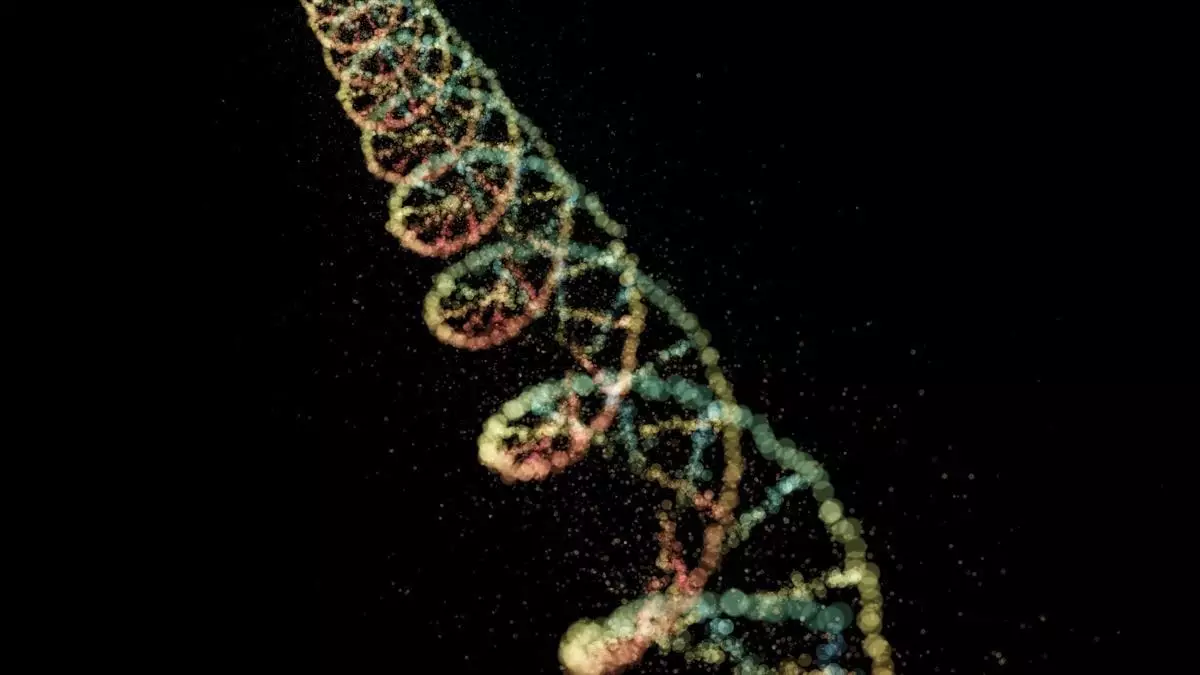Recent findings in the field of biological aging have prompted scientists to reevaluate long-held beliefs about the role of genetic mutations. Researchers are now uncovering a complex interaction between these genetic changes and epigenetic clocks—tools previously used to estimate biological age through various DNA markers. The study published in **Nature Aging** on January 13 emphasizes a promising avenue of exploration, wherein accumulated DNA mutations not only correlate with epigenetic modifications but may also actively participate in the aging process. This research challenges simplistic views on aging, suggesting that what we thought we knew may just scratch the surface.
DNA mutations are an inevitable outcome of cellular processes. Each time a cell replicates, there lies the potential for errors, exacerbated by environmental stressors and diminishing repair mechanisms. While these mutations have been traditionally linked to age-related ailments like cancer and neurodegenerative diseases, their role in the broader context of aging has remained ambiguous. The study highlights that, while DNA mutations accumulate as we age, they do not solely account for the multifaceted nature of aging. Instead, epigenetic modifications—which can modify gene expressions without altering the DNA sequence—could serve as a pivotal factor.
Researchers fashioned epigenetic clocks as integral tools in quantifying biological age. These clocks leverage specific DNA markers to output an individual’s biological age, providing a clearer understanding of the relationship between genetic makeup and age. Yet, what has emerged from current investigations is a hypothesis that these mutations may influence the functioning of epigenetic clocks, which not only serve as markers of time but may also embody active components in the aging narrative.
The study’s findings articulate a potentially bidirectional relationship between genetic mutations and epigenetic changes. Is it conceivable that epigenetic modifications are manifestations of aging? Or do they actively drive it? Dr. Steven Cummings from the University of California, San Francisco, emphasized the nexus between mutations and epigenetic markers, asserting that genetic alterations feed into and alter the epigenome. The cascading effects encapsulated in his statement hint at a larger, more intricate web of biological interactions yet to be fully understood.
Moreover, Professor Trey Ideker’s observations regarding loss of DNA methylation at mutated sites, alongside raised methylation in neighboring areas, uncover a ripple effect extending well beyond individual mutations. While they reinforce the notion of a relationship, the mechanisms underpinning these correlations remain to be fully elucidated. Understanding whether mutations trigger these epigenetic shifts or vice versa is critical in establishing a clearer path forward.
Should the ongoing research affirm that genetic mutations serve as the primary driving force behind aging, it would significantly alter the landscape of anti-aging strategies from an approach focused predominantly on epigenetic modifications. Reversing mutations presents a formidable challenge compared to modifying epigenetic markers. Furthermore, the current study primarily revolves around data from cancer patients, raising questions about the universality of these findings. To further substantiate these concepts, investigations into non-cancerous tissues and long-term studies assessing genetic and epigenetic alterations over time would be immensely beneficial.
Fostering our understanding of biological aging requires a multifaceted methodological approach that could include laboratory experiments, longitudinal studies, and interdisciplinary research. By inducing specific mutations in controlled environments and observing how these changes influence epigenetic patterns, scientists can architect a more nuanced picture of aging at the molecular level. Such investigations hold the promise of refining the existing epigenetic clocks and eventually offering a robust framework in the quest to unpack the enigma of human longevity.
The intricate tapestry of genetics and epigenetics offers an exciting frontier in aging research. As scientists delve deeper into these connections, we stand on the brink of potentially redefining our understanding of biological aging. It is through such explorations that we may ultimately unlock the keys to healthier, longer lives.


Leave a Reply